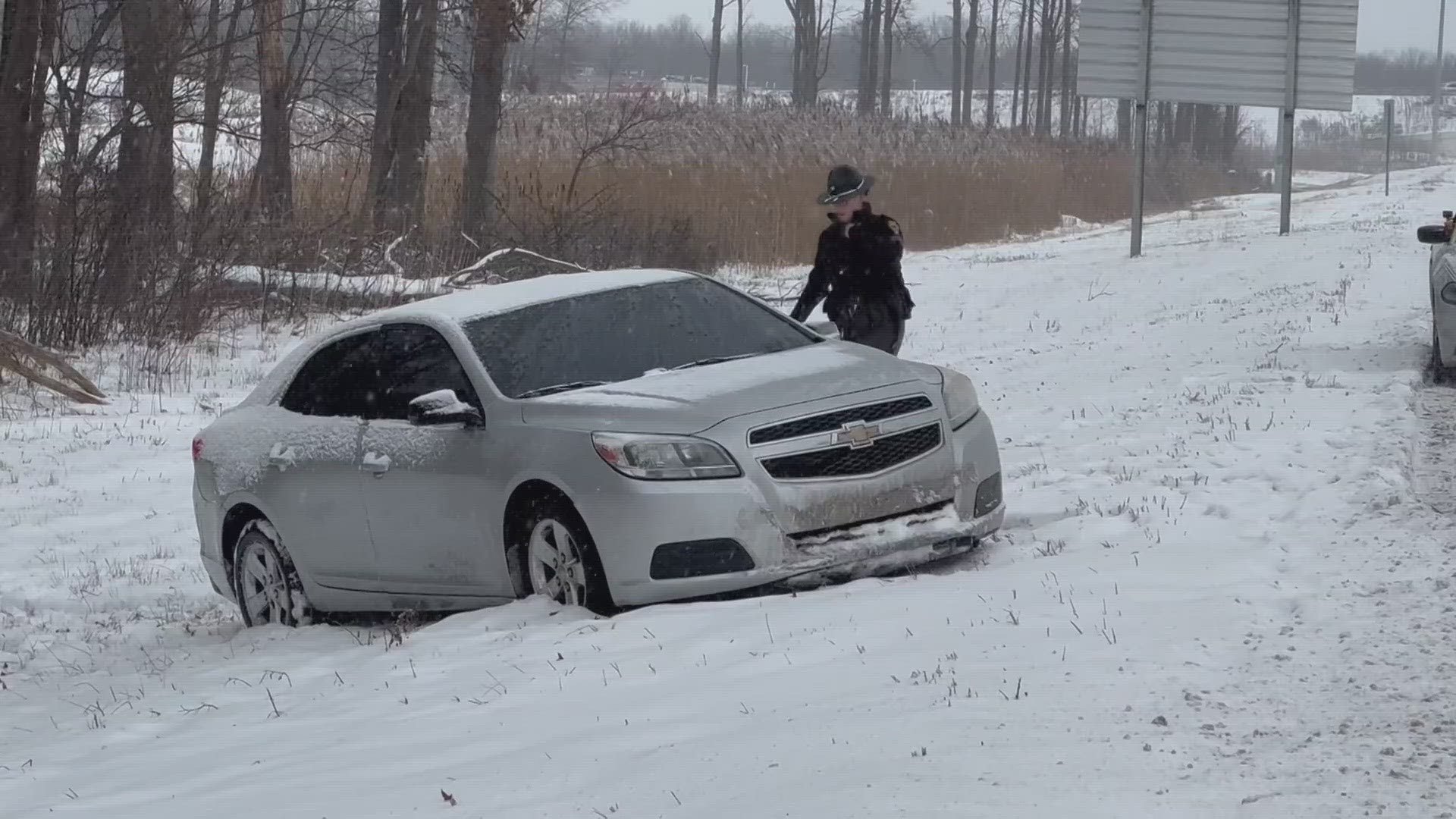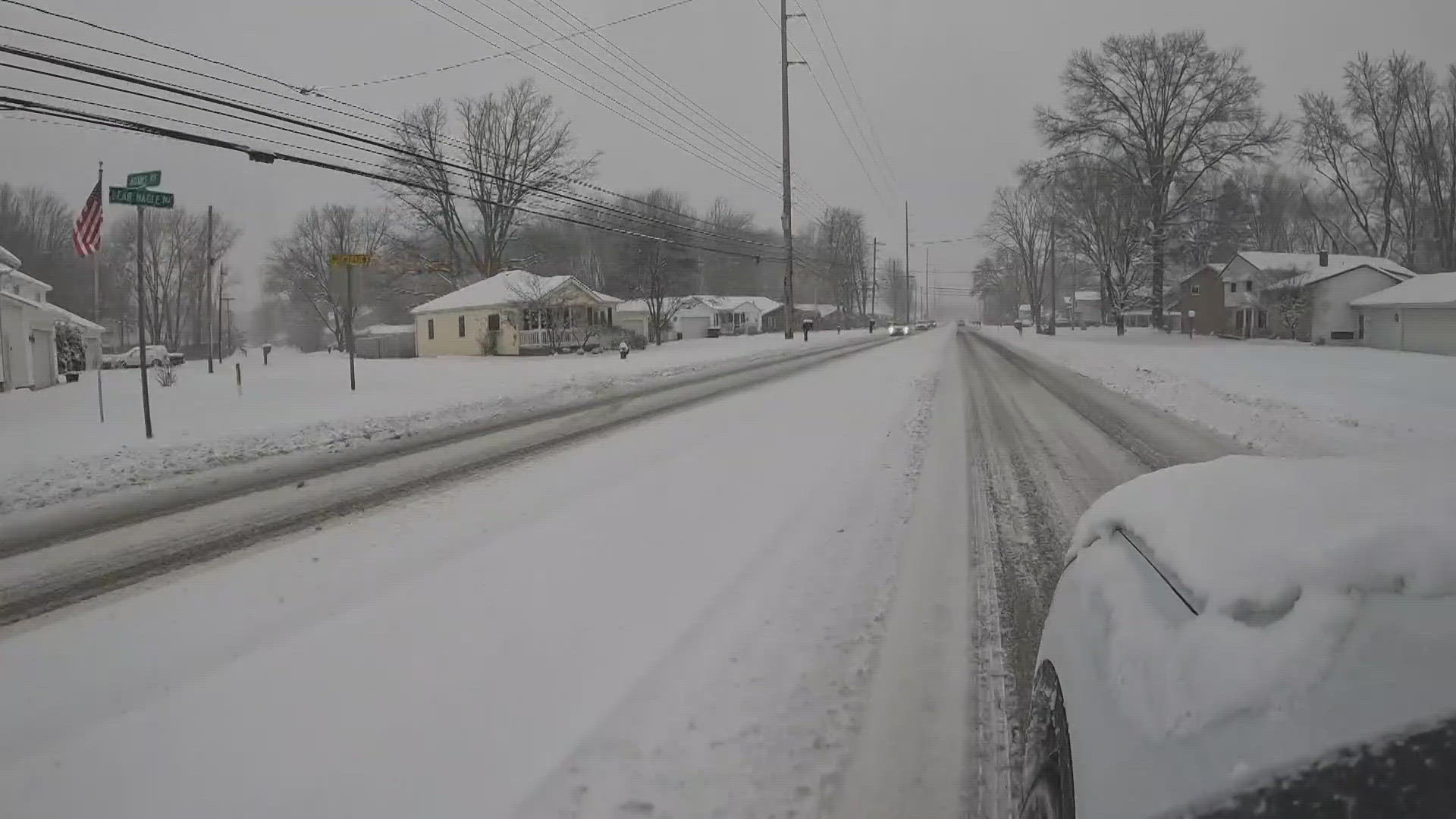CLEVELAND — As we track wintry weather across Northeast Ohio, your county may be under a snow emergency / winter road condition advisory because of difficult travel conditions on the roads.
Here are the current advisories in place as of Friday morning:
- Erie County: Level 1 (downgraded from a Level 2 earlier in the morning)
- Lorain County: Level 1 (downgraded from a Level 2 earlier in the morning)
- Huron County: Level 1
"The roadways are extremely hazardous with blowing, drifting snow and/or flooding," according to the alert from the Lorain County Sheriff's Office. "Only those who feel it necessary to travel should be on the roadways. Employees should comply with workplace policies or contact their employer."
But what does a snow emergency / winter road condition advisory actually mean?
The decision to activate one is made by the sheriff in each county. There are three levels that carry very different restrictions.
Here's what each level means, according to the Erie County Sheriff's Department:
LEVEL 1
Roadways are hazardous due to accumulated snow or ice. Drive cautiously.
LEVEL 2
Roadways are hazardous due to blowing and drifting snow and/or ice cover. Only those who believe it is necessary to drive should be on the roadways. Contact your employer to determine if you should report to work.
LEVEL 3
Roadways are closed to all non-emergency travel due to extremely hazardous conditions. No one should be on the roadway unless it is absolutely essential to travel. Those operating vehicles on the roadway for non-emergency reasons may be subject to arrest.
Speaking of winter weather driving, our Lindsay Buckingham got some tips from Mary Kaye Speckhart with Professional Driving School in Parma. Here's one you may not have known: Don't have your hands at "10 and 2" on the steering wheel. Speckhart advises drivers to keep their hands at "8 and 4." Why? Because if you're at "10 and 2," your hand is in front of the airbag and you could hit yourself in the face. So you won't have enough time to react if the airbag goes off.
Another tip from Speckhart: If you have to suddenly brake, rely on your automatic brake system to give your tires some traction on slick roads.
Here are more weather resources you can use from 3News:
- LIST: iAlert school closings and delays
- INTERACTIVE RADAR: Track the snow
- CURRENT WEATHER ALERTS: See if your county is currently under a winter weather alert
- PICS & VIDEOS: Here's how to send us your weather photos / videos
- UPDATES: Download the free 3News app (Apple / Android) to follow the latest weather updates.
- EXTENDED FORECAST: See the 7-day weather outlook for Northeast Ohio
- SUBSCRIBE: Get the day's top headlines sent to your inbox each weekday morning with the free 3News to GO! newsletter


